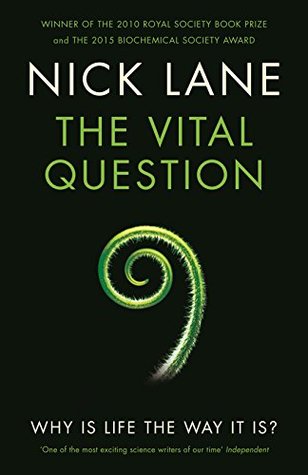More on this book
Community
Kindle Notes & Highlights
there are two big unknowns at the very heart of biology today: why life evolved in the perplexing way it did, and why cells are powered in such a peculiar fashion.
a dream so naive that it is barely grounded in science at all, that we are not alone.
Life, as biochemist Albert Szent-Györgyi observed, is nothing but an electron looking for a place to rest.
It can kill a human being cell by cell, person by person, in devastating epidemic, or dissolve entire oceanic blooms extending over hundreds of miles, overnight. Yet most biologists would not even classify it as alive. The virus itself doesn’t give a damn.
In the end, respiration and burning are equivalent; the slight delay in the middle is what we know as life.
Life could have been driven by thermal or mechanical energy, or radioactivity, or electrical discharges, or UV radiation, the imagination is the limit; but no, all life is driven by redox chemistry, via remarkably similar respiratory chains.
There’s a famous line, delivered by Orson Welles, in the 1940s film noir The Third Man: ‘In Italy, for thirty years under the Borgias, they had warfare, terror, murder and bloodshed, but they produced Michelangelo, Leonardo da Vinci and the Renaissance. In Switzerland, they had brotherly love, they had five hundred years of democracy and peace – and what did that produce? The cuckoo clock.’ Welles is said to have written that line himself. The Swiss government reputedly sent him an angry letter, in which they wrote ‘We don’t make cuckoo clocks.’
‘Big fleas have little fleas upon their backs to bite ’em; little fleas have smaller fleas, and so ad infinitum.’ Every conceivable niche is occupied, with each species exquisitely adapted to its own space. Every plant, every animal, every bacterium, is a habitat in itself, a jungle of opportunities for all kinds of jumping genes, viruses and parasites, to say nothing of big predators.


